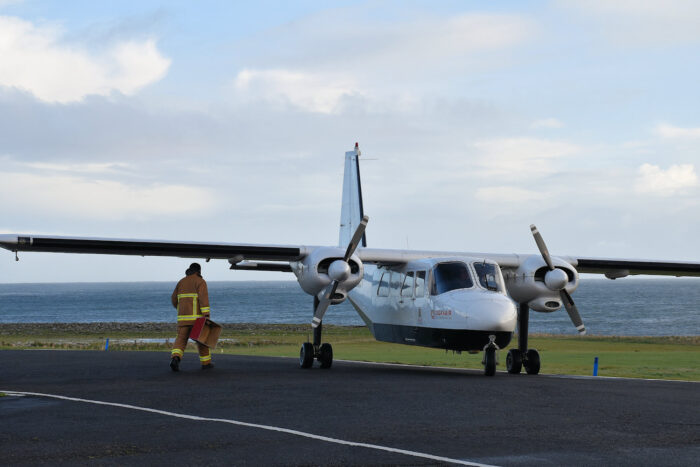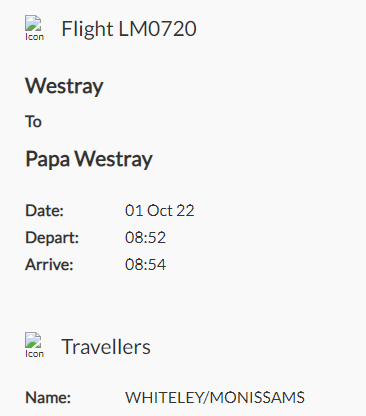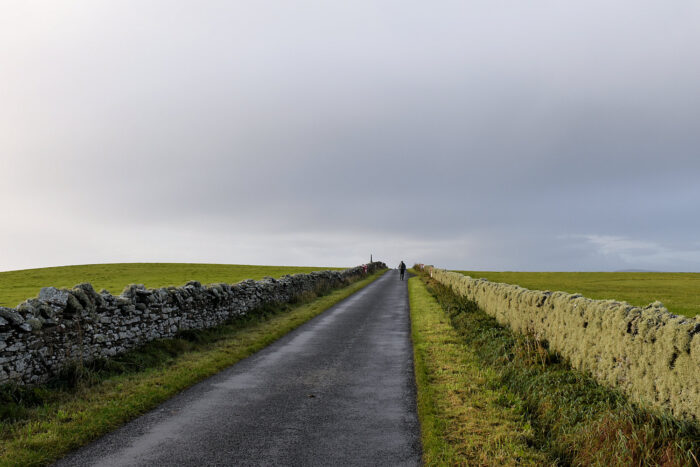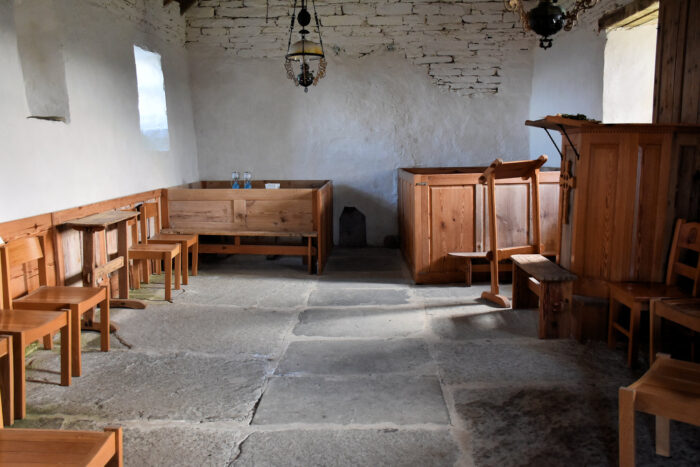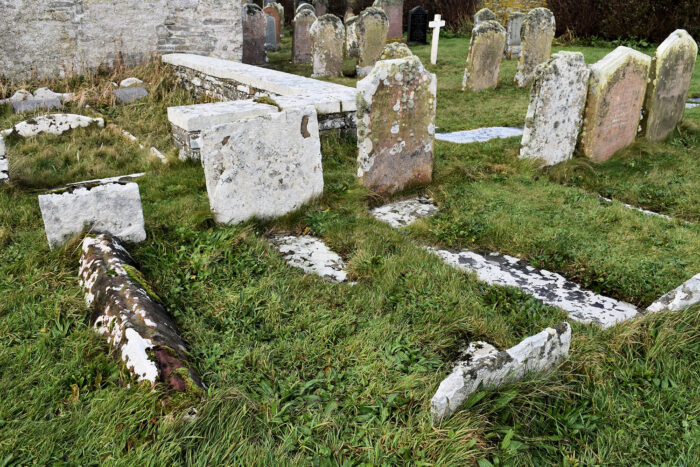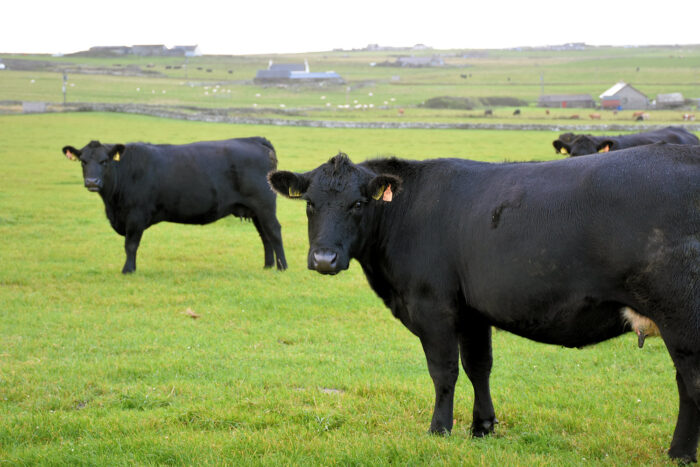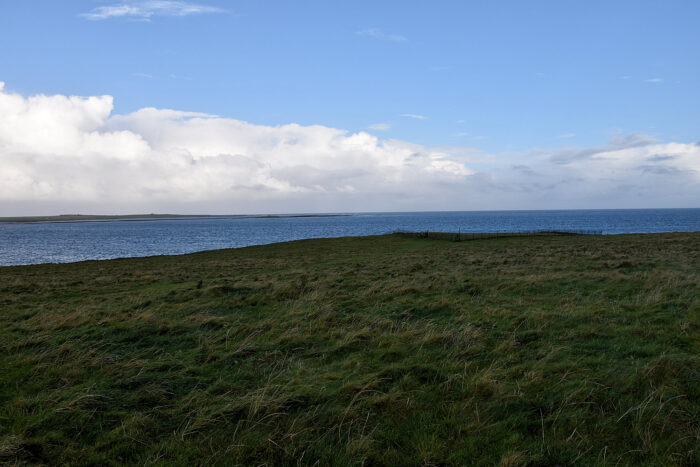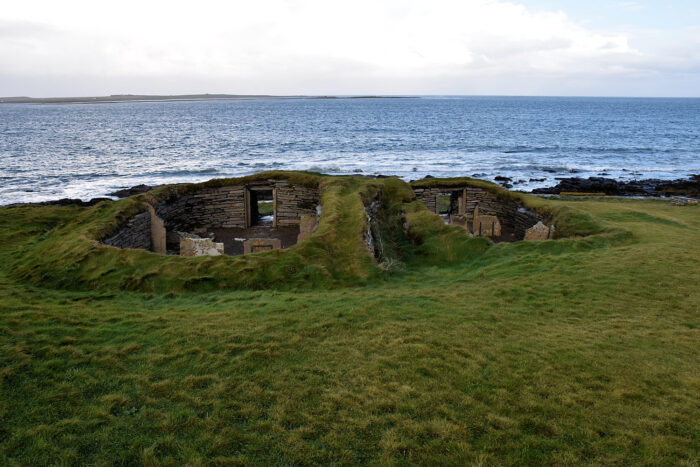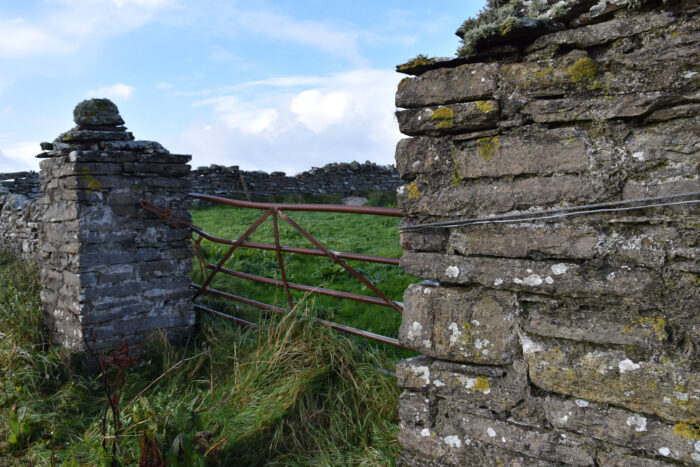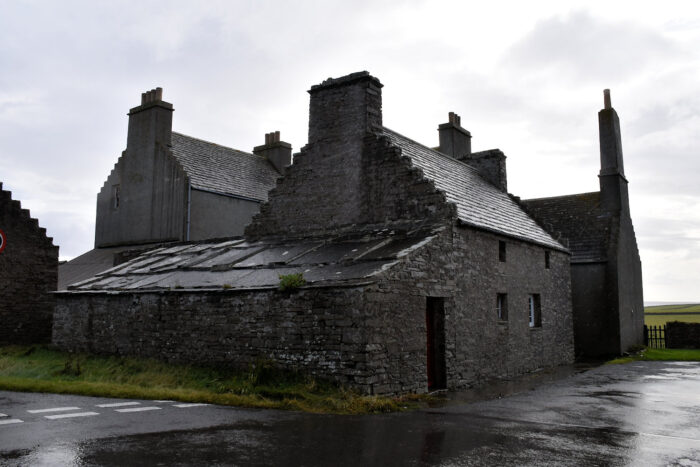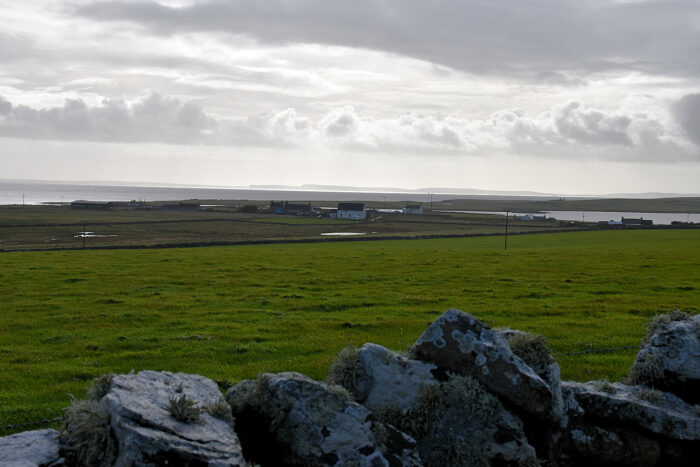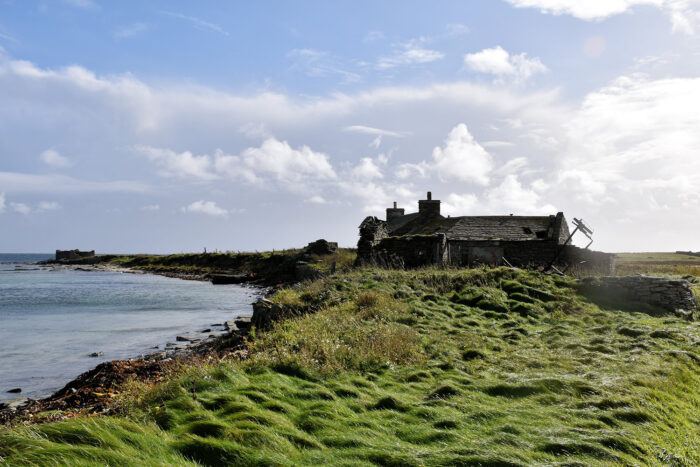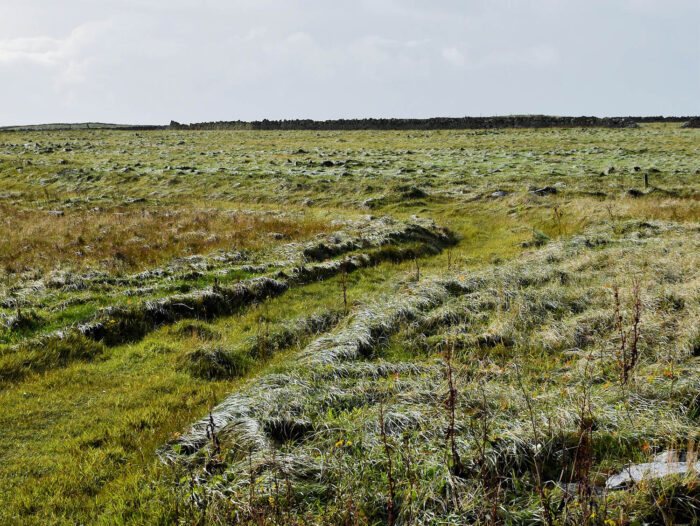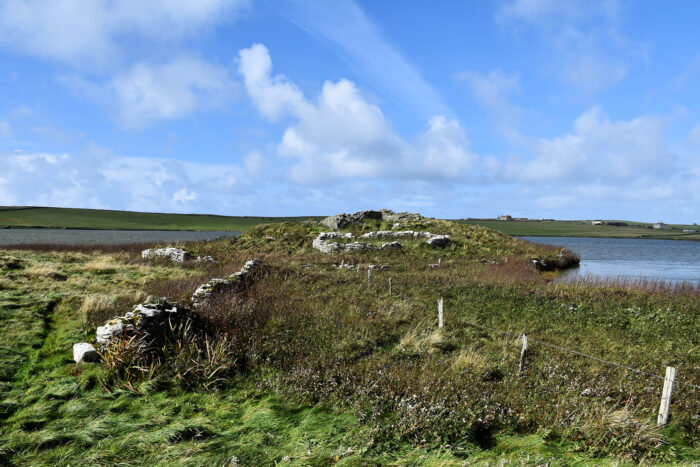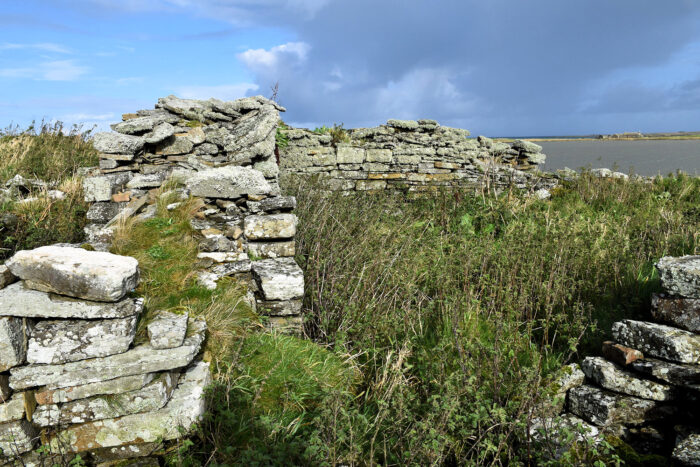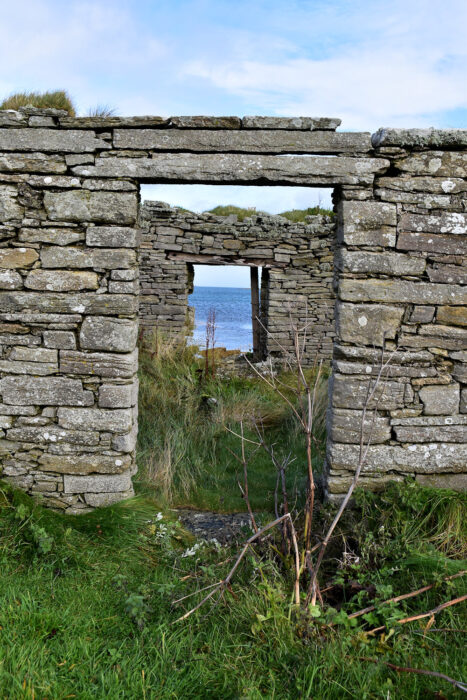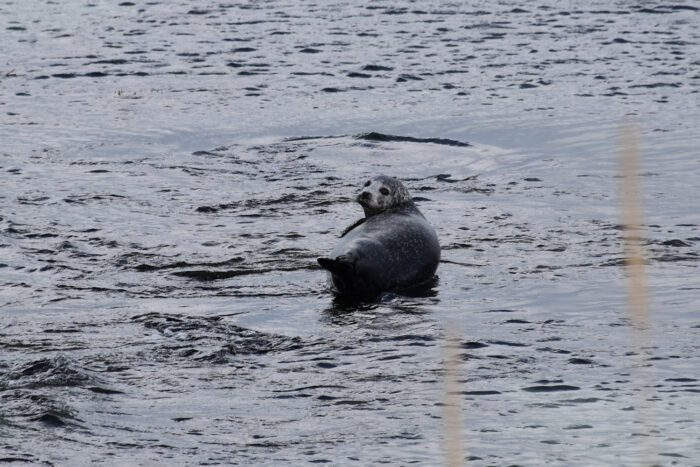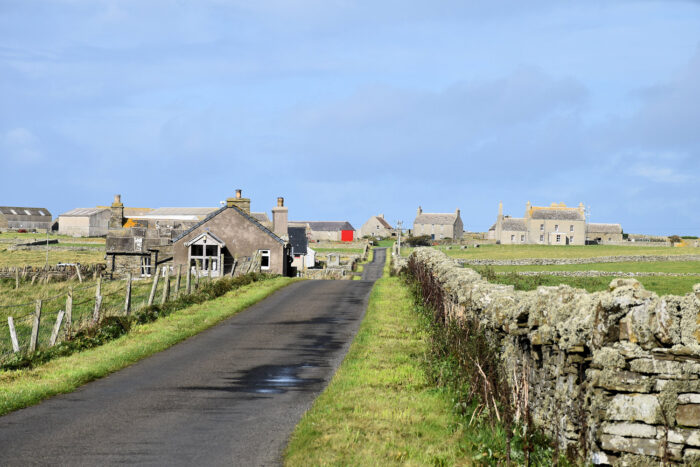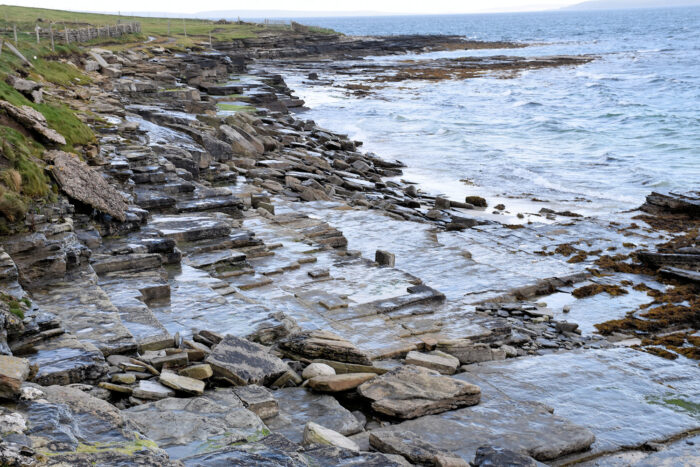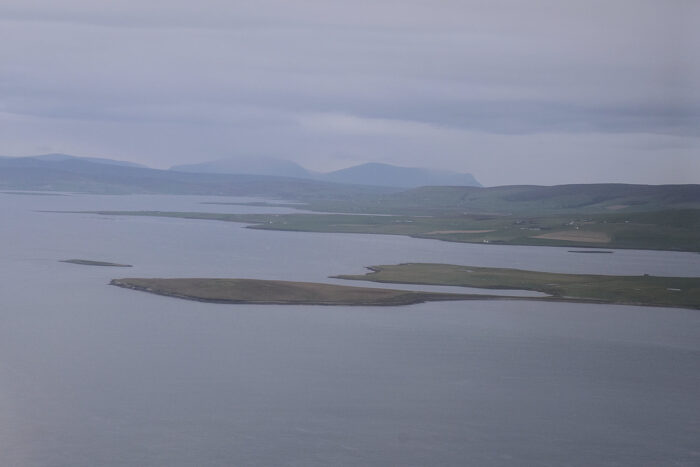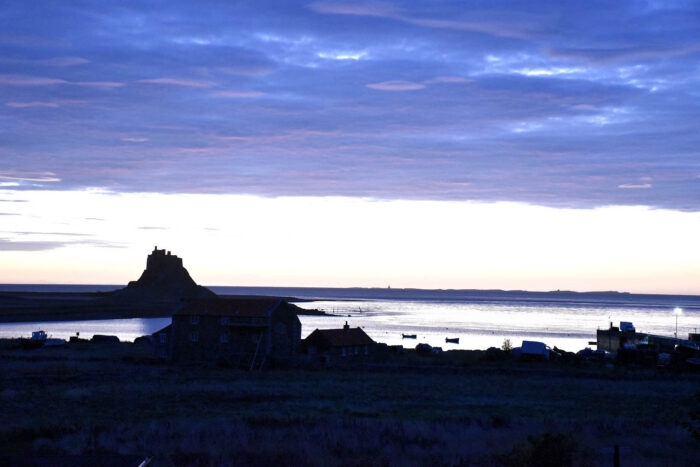There’s a lot of photos here but we have a whole island to explore! So hop aboard and do up your seatbelt for a short flight. And I mean short.
So this is Papa Westray, a smaller island east of Westray. Population about 70.
A first stop is a little kirk.
There is evidence that there has been a kirk on this site since at least the late 7th century – probably originally founded as a base for missionary campaigns among the pagan Picts. The present building dates from the 12th century, and was enlarged around 1720 and furnished with gallery, pulpit and box-pews.
Westry & Papa Westray
In the kirkyard is a very weathered hogback tombstone which has been dated to the 12th century; these stones were a Norse type, imitating in stone the longhouse with its roof of wooden shingles. The reddish stone is not local to Papay, it has been imported to mark the burial place of an important person.
Westry & Papa Westray
Also note the flat stones between the headstones and footstones of the adjoining graves. There a lot in this graveyard but I’ve never seen them before.
A long muddy farm lane
And a windy, rainy paddock. Can you see the fenced enclosure on the other end?
That’s the Knap of Howar, the oldest standing buildings in northern Europe. About 500 years older than Skara Brae which is older than the Giza pyramid etc.
No photos but I made a video. (Notice how the wind drops off after going inside.)
OK one photo.
Shop, hostel, post office, surgery & school are along here.
The island is the Holm of Papa. Population 0. It has 3 Neolithic cairns. You might be able to see one of the right end.
This next place is one I probably wouldn’t have visited if I’d realised how hard it was to get to.
According to Google Maps, you got to the house on the right with the two chimneys and then fly across the loch.
For more carbon-based landforms, the internet says you just walk past the old mill and across some paddocks. The old mill is/// you can see the ruined house on the left and maybe the island cairn on the right, and in between them you might just make out a bump that is the old mill. So walk past that, and then across some paddocks, including this one. Is that the path or just a random dent in the grass? I don’t think it’s the path, but here’s a stile, so obviously it is.
The more obvious stage of the path.
So this is where I ended up.
This is a renowned Orkney pilgrimage-centre, standing on a conical mound on a small peninsula (about 4.5 metres high and 35 metres across at the water level) in St Tredwell’s Loch. The remains of the late medieval walls can be seen – deliberately built over Iron Age remains, including an underground tunnel leading to a circular building or broch. The thick walls of the chapel and records of tracery work indicate an important and well-founded establishment. . . . St Tredwell or Triduana is associated as a ‘holy virgin’ with St Boniface in a medieval account of the mission from Jarrow to Pictland in 710 invited by King Nechtan. Legend has it that Nechtan fell in love with Triduana and praised her beautiful eyes. She responded by plucking them out and sending them to him skewered on a twig. Miraculous cures are associated with St Tredwell, particularly in those suffering from eye afflictions. Pilgrims travelled to Papay from all of Orkney and the north seeking a cure. Marwick, in a paper written in 1925, cites Brand in his Brief Description of Orkney (1700) as having much to say of the chapel:
Papa Westray
Up until the early years of the 19th century, the people of Orkney regarded the waters of St Tredwell’s Loch in Papay as medicinal. As a result, the loch, and the 12th century St Tredwell’s Chapel, built on what was once an island but is now a peninsula, was one of Orkney’s most visited pilgrimage sites for centuries. In 1700, in his A Brief Description of Orkney, Zetland, Pightland Firth and Caithness, the Rev John Brand wrote that those seeking a cure would walk around the loch in complete silence – to talk to anyone, he noted, would prevent the cure from working. . . . The chapel, from which the loch took its name, was dedicated to St Triduana.– a nun thought to have travelled north into Scotland from Northumbria in 715AD to convert the Picts. Dedications to Triduana are found throughout Scotland, where she goes by a number of names, such as Tredwell, Trodline and, in Old Norse, Trollhaena. According to legend, Nechtan, king of the Picts, became enamoured with the young nun, despatching messengers to tell her how beautiful her eyes were. Incensed, Triduana plucked out her eyes and sent them, impaled on a branch, to the king. As a result, her shrines became particularly associated with eyes and the chapel in Papay became a place of pilgrimage for anyone suffering eye problems.
Orkneyjar
Walking back now.
That’s the old mill.
Within the building is the collapsed remains of machinery two stones of 1.3m diameter, the upper 0.2m thick, the lower one 0.3m. – It is clear that great difficulty was experienced in getting an adequate flow of water; Irvine states the mill operated only at low tide and then not effectively. According to Irvine, it was used only for grinding oats for feed, while corn was ground in the windmill.
Canmore
There are a lot of rocks along here.
There is the ferry terminal!
And there is ferry coming just to get me! (Seriously, the Saturday ferries are by request. So I rang up that morning–from a muddy farm lane–and at 4.30 it comes chugging over with its crew of three, just to pick up me.)
